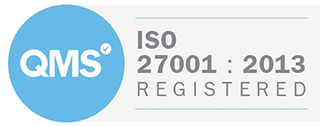
NOTE: See the latest article “Coronavirus Job Retention Scheme | February 2021 Update” which relates to the Job Retention Scheme having been extended until the end of April 2021.
Please note, that the Coronavirus Job Retention Scheme | May 2020 Update article below has now been superseded by the information mentioned above.
Below is our guidance relating to the Coronavirus Job Retention Scheme, an outline of what the scheme is about, and how you can submit your claim.
- The Job Retention Scheme has been extended until the end of October.
- From August to October the scheme will continue but with greater flexibility to support the transition back to work. Employers currently using the scheme will be able to bring furloughed employees back part-time and with employers being asked to pay a percentage towards the salaries of their furloughed staff. The employer payments will substitute the contribution the government is currently making.
- Further detail will follow by end May, but the Chancellor reassured that workers will continue to receive the same level of support as they do now at 80% of salary up to £2,500.
The government announcement can be read on the gov.uk website at “Chancellor extends furlough scheme until October”.
The Job Retention Scheme:
- is open to all employers (inc businesses, charities, recruitment agencies (agency workers paid through PAYE) and public authorities) starting 1 March 2020.
- is claimed through an online portal now available for employers to claim 80% of employees’ usual monthly wage costs, up to £2500 pm, plus the associated Employer NI contributions and minimum auto enrolment employer contributions on that wage.
Eligibility
- Furloughed employees must have been on your PAYE payroll on or before 19 March 2020 and have been notified to HMRC on an RTI submission on or before 19 March 2020.
- Employees can be on any kind of contract including full time, part time, agency, flexible or zero hours.
- The scheme also covers employees who were made redundant or stopped working for you on or after 28 February 2020 if they are rehired by their employer.
- Employees who are working on reduced hours or for reduced pay will not be eligible.
- Employees on unpaid leave cannot be furloughed unless placed on unpaid leave after 28 February 2020.
Full details on who you can claim for is available in the government guidance.
Process
- Employers need to discuss with their staff and make any changes to the employment contract by agreement.
- When making decisions relating to furlough, equality and discrimination laws will apply in the usual way.
- To claim the subsidy, employers need to write to employees confirming they have been furloughed and keep a record of the communication for 5 years.
- You do not have to furlough all employees, but those who are furloughed must not undertake any work for you.
- The minimum amount of time an employee can be furloughed for is 3 weeks. Therefore, you can only submit one claim at least every 3 weeks.
If you would like a template furlough letter please contact the helpline and we will be pleased to provide one.
Payment
Employers will receive a grant from HMRC to cover the lower of 80% of an employee’s regular wage or £2,500 per month plus the associated Employer National Insurance contributions and minimum automatic enrolment employer pension contributions on that subsidised wage. Fees, commission and bonuses should not be included.
Employers must pay their employee the lower of 80% of their regular wage or £2,500 per month. An employer can choose to top up an employee’s salary beyond this but is not obliged to under this scheme.
As individuals are only entitled to the National Living Wage (NLW)/National Minimum Wage (NMW) for the hours they are working, the regulations do not apply to furloughed workers who are not working. However, the exception is if they are required to undertake online training courses while being furloughed. If so, they must be paid at least the NLW/NMW for the time spent training, even if this is more than the 80% of the wage that will be subsidised.
Calculating the wage
For full and part time employees: the employee’s actual salary before tax as of 28 February 2020 should be used to calculate the 80%. Fees, and discretionary commission and bonuses should not be included.
For employees with variable pay: if the employee has been employed for a full twelve months prior to the claim you can claim for the higher of either:
- The same month’s earnings from the previous year OR
- An average of their monthly earnings from the 2019-20 tax year.
If the employee has been employed for less than a year you can claim for an average of their monthly earnings since they started work.
See the government guidance and calculator for full details.
Employees
The wages of furloughed employees will be subject to Income Tax and National Insurance as usual. Employees will also pay automatic enrolment contributions on qualifying earnings, unless they have chosen to opt-out or to cease saving into a workplace pension scheme.
Once the government closes the scheme employers will have to decide if they have work for the employees to return to. If not, it may be necessary to consider termination of employment (redundancy).
Questions and Answers
What if an employee is on Statutory Sick Pay (SSP)?
Employees on sick leave or self-isolating should get SSP but can be furloughed after this.
If an employee cannot work while they are self-isolating because of coronavirus (COVID-19) they may qualify for SSP for every day in isolation (ie from day 1). Employers may also qualify for a rebate for up to 2 weeks of SSP.
For further information on the SSP rebate scheme.
Employees who are shielding in line with public health guidance can be placed on furlough.
What if my employee has more than one job?
Employees can be furloughed from more than one job. Each job is separate, and the cap applies to each employer individually. However, an employee cannot work for his/her employer during the hours they have been furloughed from. Employees can work for another employer while being furloughed from another as long as it is allowed in their contract of employment.
What about volunteer work or training?
An employee can participate in volunteer work or training as long as it does not generate revenue for or provide services to your organisation.
If employees are required to eg complete online training courses while furloughed then they must be paid at least the NLW/NMW for the time spent training, even if this is more than the 80% of their wage that is subsidised. Note that when calculating if they have received at least the NMW while training the NMW rate increased on 6 April 2020.
What about employees on maternity leave, contractual adoption pay, paternity pay or shared parental pay?
Individuals who are on or who plan to take maternity leave must take at least 2 weeks off work (4 weeks if in a factory or workshop) immediately following the birth of their baby.
If an employee is eligible for Statutory Maternity Pay (SMP) or Maternity Allowance (MA) the normal rules apply, and they can claim up to 39 weeks of statutory pay/allowance. Therefore, those who qualify will still receive 90% of their average weekly earnings in the first 6 weeks followed by 33 weeks of pay paid at 90% of their average weekly earnings or the statutory rate (whichever is lower).
If you provide enhanced earnings-related contractual pay to women on maternity leave this is included as wages costs that you can claim through the scheme.
The same principles apply where your employee qualifies for contractual adoption, paternity or shared parental pay.
If an employer enhances maternity pay you may be able to claim through the furlough scheme for the contractual earnings-related element of pay for employees who qualify.
You could furlough an employee on Shared Parental Leave as long as it was for a minimum period of 3 weeks.
An employee can also end their maternity leave early (employers can agree to waive or reduce the 8 weeks’ notice) and be furloughed.
What about holidays during Furlough Leave?
Annual leave will continue to accrue as per the employment contract throughout furlough leave.
The government announced on 27th March 2020 that there will be changes in the Working Time (Coronavirus) (Amendment) Regulations 2020 to allow workers who have not taken all of their statutory annual leave entitlement due to COVID-19 to carry it over into the next 2 leave years.
The regulations will allow up to 4 weeks of unused leave to be carried into the next 2 leave years. Employers are also able to restrict the taking of leave if there is a business need.
Employees can take holiday whilst on furlough, however it should be paid at their normal rate of pay (or if pay varies using average received in previous 52 weeks). Employers will therefore have to top up payment received through the grant furlough scheme.
Bank Holidays: if they are usually worked, then you can pay and claim at 80%. However, if they are usually taken as holiday then you would either have to top up to usual holiday pay or give a day in lieu.
Further Information
- Further government information on the Coronavirus Job Retention Scheme.
- Government guidance on calculating Furlough Pay.
- Further information on holiday pay during furlough can be found in the Employee Guide.
- The holiday accrual and carry forward during Furlough Leave press announcement.
- For further information on the SSP rebate scheme.
For more articles and ongoing updates visit the HR Solutions’ dedicated pages, ‘Return to Work Guide’ and ‘Coronavirus Advice and Guidance for Employers’.
HR Solutions are here to provide you with support and advice on any employment related issues; to find out more call us on 0844 324 5840 or contact us online.








